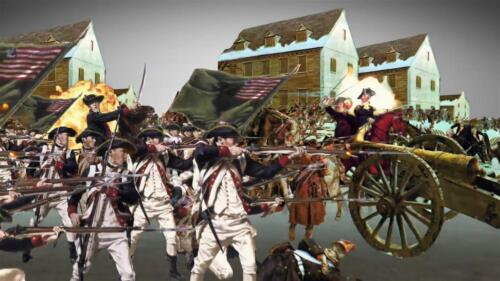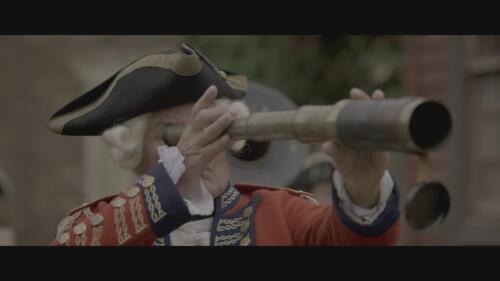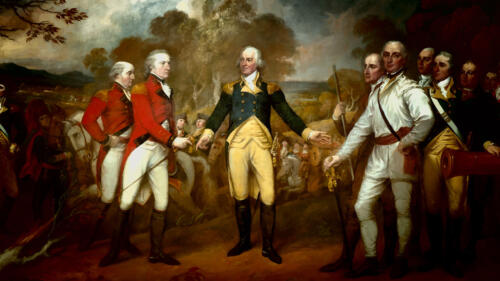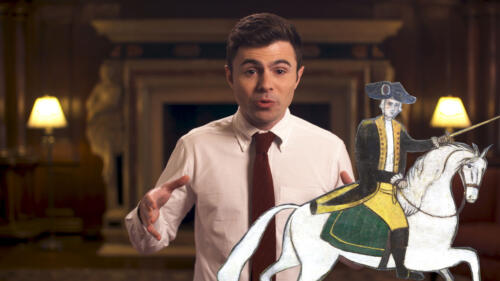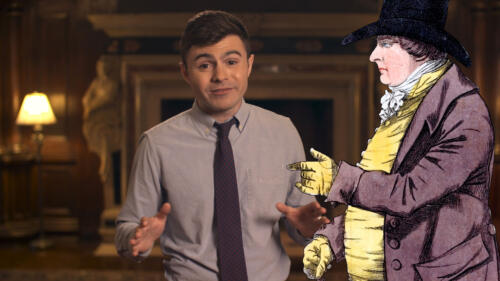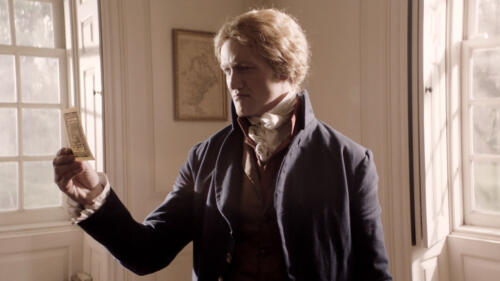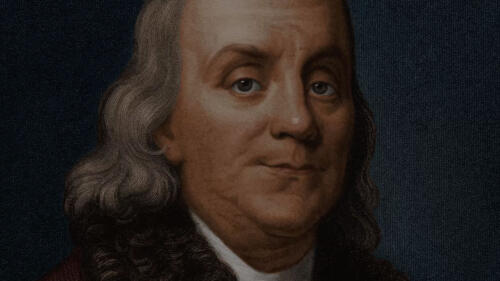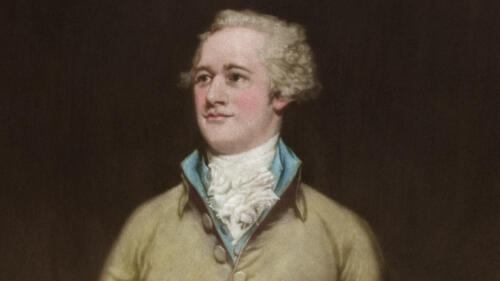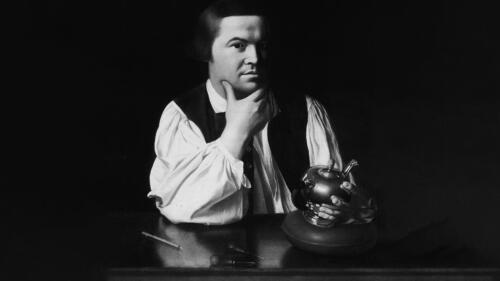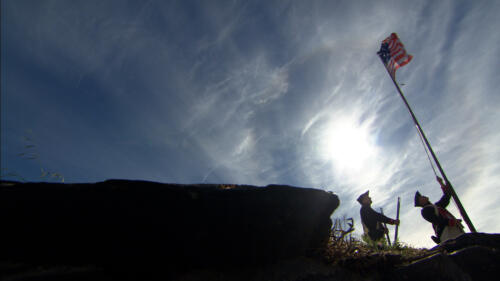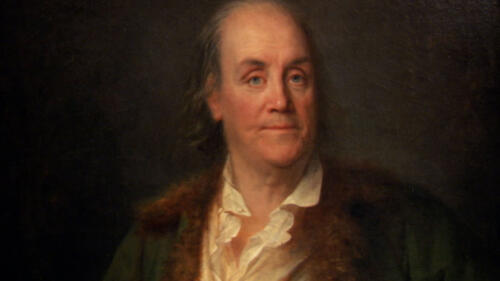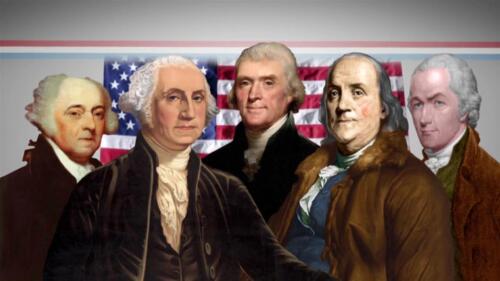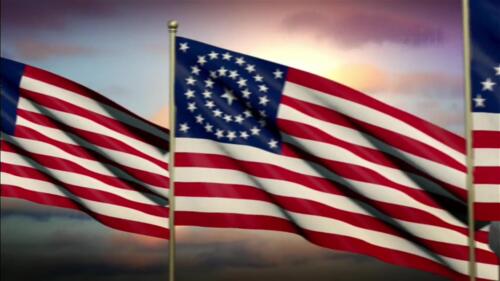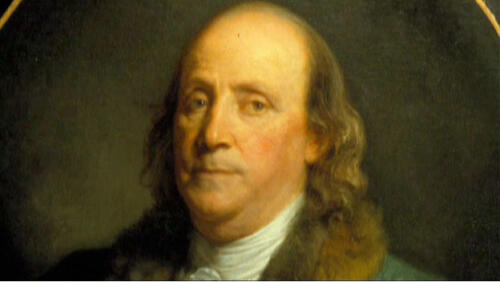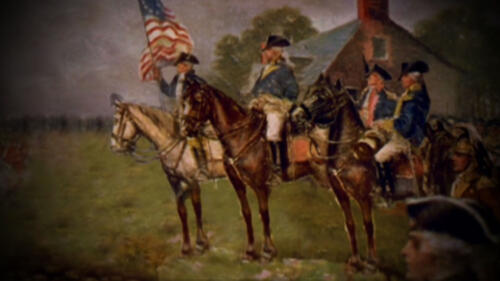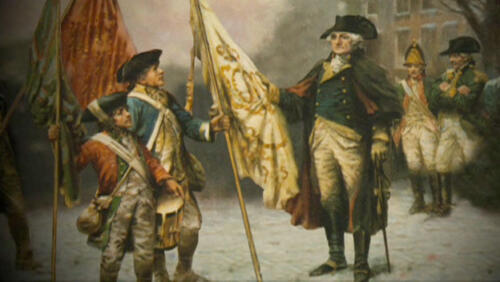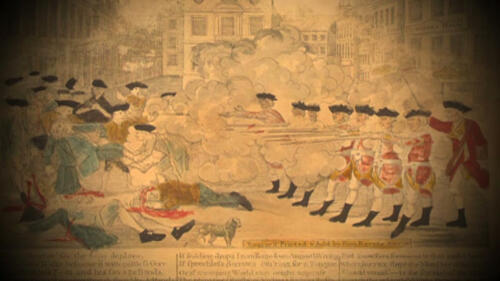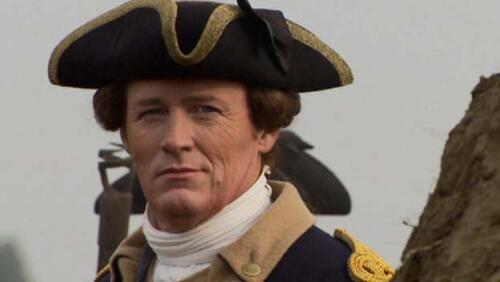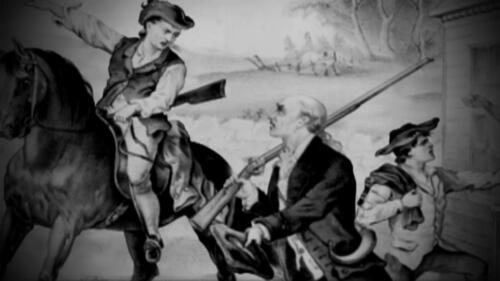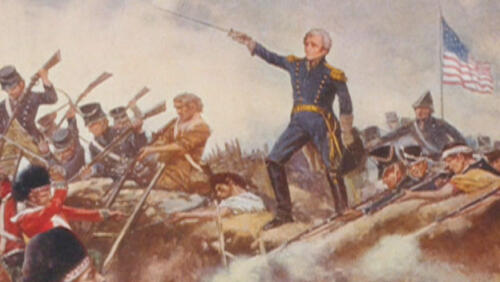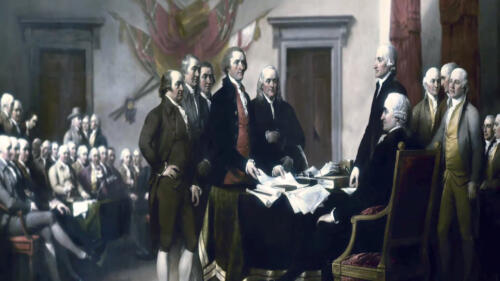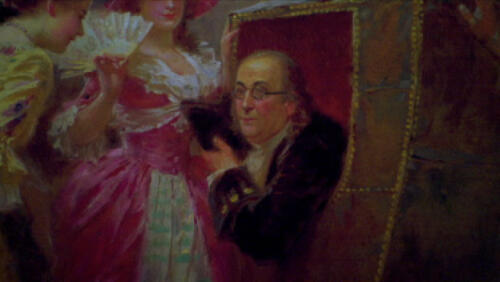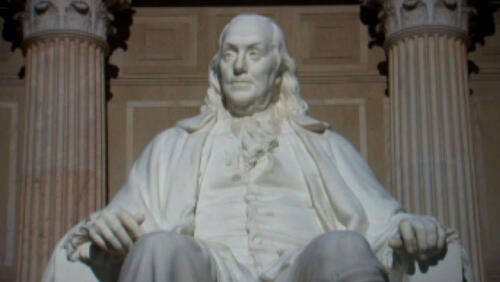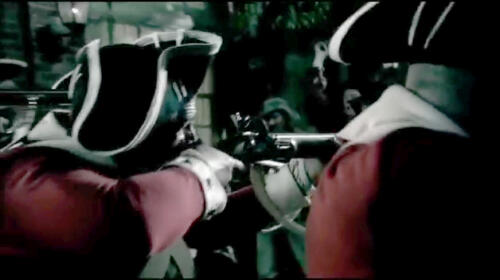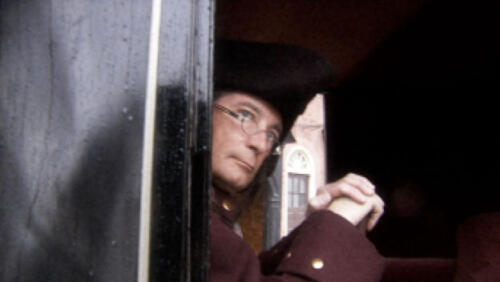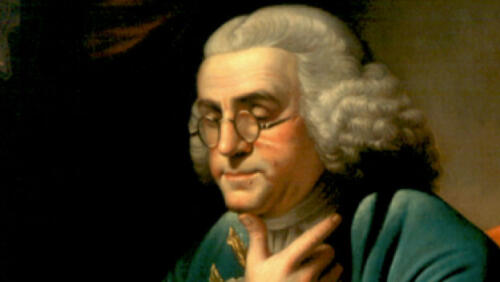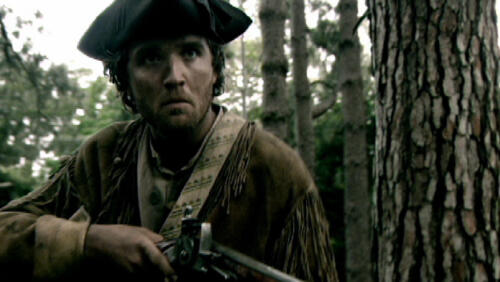American Revolution
The Revolutionary War waged by the American colonies against Great Britain influenced political ideas and revolutions around the globe, as a small fledgling nation won its freedom from the greatest military power of its time.
Featured Overview
Did you know that Paul Revere didn't ride alone, and there were women on the Revolutionary War battlefields? Find out more about the war's lesser-known patriots.

Featured Overview
Did you know that Paul Revere didn't ride alone, and there were women on the Revolutionary War battlefields? Find out more about the war's lesser-known patriots.
Start Here

Most famous for their role in the Boston Tea Party, the Sons of Liberty used grassroots activism to push back against British rule.

While the British were often better equipped and trained, these events proved critical in ultimately securing Americans' victory in the war.

They include a spy, a poet, a guerrilla fighter—and foot soldiers who fought on both sides of the war.

The Declaration of Independence played a critical role in unifying the colonies for the bloody struggle they faced.
Washington Commands the Continental Army
Washington Commands the Continental Army – David McCullough
American history author David McCullough discusses the challenges George Washington faced in commanding the Continental Army during the American Revolution.
1:02 watch
3 Events That Triggered the American Revolution
Explore All Related Topics

The answer lies in an over-the-top 18th-century fashion trend and a long-forgotten slang term.
The Revolution has been won, but for Washington, the problems, even within his own army, are just beginning.
Peter Salem makes history by killing a British officer during the siege of Boston.
After escaping slavery, Crispus Attucks finds himself confronting British soldiers at the forefront of the Boston Massacre.

The French war hero's 13-month visit as 'America's Guest,' from 1824 to 1825, rekindled the spirit of the American Revolution.

As colonists faced tough odds in the Revolutionary War, America's first diplomat worked his charm to win France's vital backing.

While many American patriots gushed about the political effectiveness of the ‘Destruction of the Tea,’ others thought it went too far.

Death tolls weren't as high as in other wars, but the losses were significant for the population of the 13 colonies.

The region became a base for competing colonial powers to pick off valuable British territories and interfere in the war.

As colonists grew increasingly defiant, the British government responded with punishing measures that only angered them more.

Before it became home to the U.S. Military Academy, the perch on the Hudson River was the most important strategic position in America during the Revolutionary War.

An estimated 30,000 Hessian troops were tapped by rulers in German territories. Some welcomed the journey abroad; others were forced to join the fight.

America’s earliest founding document survived war, fire, mistreatment, insects and the ravages of time prior to landing at its current home in the National Archives.

The document was designed to prove to the world (especially France) that the colonists were right to defy King George III's rule.

Surprisingly little.

After the Revolutionary War, a series of revolutions took place throughout Europe and the Americas.

How five of the nation’s Founders made their livings, how they invested in the revolutionary cause—and what they gained and lost.

From a son of Benjamin Franklin to a Mohawk leader to the governor of Massachusetts, these men chose to side with the British.

The 1775 document, followed by the Philipsburg Proclamation, promised enslaved people freedom if they sided with British troops fighting against American forces during the Revolutionary War.

Although not as iconic as those fought in the North, battles waged in the South determined the outcome of the Revolutionary War.

While the British were often better equipped and trained, these events proved critical in ultimately securing Americans' victory in the war.

During the Revolutionary War, the Continental Congress became America's de facto government.

Printed just weeks after British troops opened fire on an unarmed crowd of Bostonians, Revere’s depiction of the melee likely stoked anti-British sentiment throughout the colonies.

A brash, self-made millionaire helped fund the fight for independence, but after the war, he ended up in debtor's prison.

The 47-page pamphlet took colonial America by storm in 1776 and made critical arguments for declaring independence from England.

Anti-war movements date back to the birth of the United States.

The Slave Enlistment Act of 1778 stipulated that any enslaved person accepted to the 1st Rhode Island Regiment be “immediately discharged from the service of his master or mistress, and be absolutely free."

Meet the standout soldiers, spies and homefront forces who fought in American conflicts, from the Revolution to World War II.

A fleet of makeshift warships helmed by colonial 'privateers' ravaged British shipping.

The Marquis de Lafayette was only the beginning.

From stagecoach to pneumatic tube, the post office finds a way to get Americans their mail.

Postal mail delivery became a vital communication line for the colonies—and then helped unite the newly independent United States.

The Founding Father opposed slavery, but he bought and sold enslaved people for his in-laws—and possibly even his own household.

Eliza Hamilton poured her energy into founding a free school and an orphanage in New York to help children in need.

The Founding Fathers were fighting for freedom—just not for everyone.

Many of Philadelphia’s black residents stayed behind and were enlisted to care for the sick.

As commander of the Continental Army, Washington faced dual enemies: the British and smallpox. So he made a risky move.

Federalism, or the separation of powers between state and federal government, was entirely new when the founders baked it into the Constitution.

The future American president represented Redcoats accused of murdering American patriots in an incident that helped spark the Revolution.

As he stepped down as commander of the Continental Army, he wrote a 'circular letter' that outlined four essentials for the new nation's success.

They include a spy, a poet, a guerrilla fighter—and foot soldiers who fought on both sides of the war.

Crispus Attucks, a multiracial man who had escaped slavery, is known as the first American colonist killed in the American Revolution.

Patriots forced onto horrific British prison ships were presented with two options: turn traitor or die.

Secret agents, invisible ink, ciphers and codes—the gritty and dangerous underworld of the colonial insurgency

Discover the intriguing history, enigmatic rituals and hidden knowledge of renowned secret societies such as the Knights Templar, Freemasons, Skull and Bones and, of course, the Illuminati.

The Founding Fathers passed the country’s first whistleblower protection law just seven months after signing the Declaration of Independence. The government even footed the legal bills.

A series of events escalated tensions that culminated in America's war for independence.

Most famous for their role in the Boston Tea Party, the Sons of Liberty used grassroots activism to push back against British rule.

For starters, the colonists weren't protesting higher taxes on tea.

The Independence Day tradition dates nearly as far back as the country's beginning and was proposed by one of the Founding Fathers.
American history author David McCullough discusses the challenges George Washington faced in commanding the Continental Army during the American Revolution.

Nearly 80 years before the Dred Scott decision, a midwife used the Massachusetts constitution to fight for her liberty.

America's earliest conspiracy included a plot to foil the Patriot rebellion—and perhaps even kill the future first president.

James Armistead provided critical intel to the Continental Army as a double agent during the Revolutionary War.

These military leaders, rebels, politicians and writers varied in personality, status and background, but all played a part in forming a new nation and hammering out the framework for the young democracy.

From water-powered textile mills, to mechanical looms, much of the machinery that powered America's early industrial success was "borrowed" from Europe.

Jude Hall was one of the most revered Black veterans of the American Revolution. That didn't stop the kidnappers from targeting his boys.

With a quarter of his troops freezing, starving and barely clothed, Washington, running out of options, schemed a bold—and highly risky—Christmas Eve attack.

Valley Forge in Pennsylvania was the encampment of General George Washington and thousands of troops of the Continental Army during the winter of 1777-1778.

The Revolutionary War officer-turned traitor had a brilliant strategy—except that everything went wrong.

While ancient Roman armies largely hunted their rations during war campaigns, modern soldiers now have access to pizza that can last as long as three years.

Hamilton's leadership in the war's last major land battle would deliver the future Secretary of the Treasury his long-sought glory.

Franklin’s 'Join or Die' cartoon was so effective it rallied the colonies and influenced politics throughout two wars.

Historians offer up many explanations, including that the Revolutionary War general may have had some self-esteem issues as a child and young man.

Burr’s political achievements are largely overshadowed by his duel with Hamilton.

At first, colonists used trees as meeting places to protest and plan resistance. Then their significance grew.

The American experiment has had both high and low moments in ensuring freedom for its citizens. Take a look at eight times the nation made strides toward ensuring life, liberty and the pursuit of happiness.

The Declaration of Independence played a critical role in unifying the colonies for the bloody struggle they faced.

He signed the Declaration of Independence and went on his own (not-so-famous) midnight ride. But a deformity may have contributed to Caesar Rodney's lack of fame.

On a cold night in Boston in 1770, angry colonists pelted a lone British sentry with snowballs. The rest is history.

While the French Revolution was a complex conflict with numerous triggers and causes, the American Revolution set the stage for an effective uprising.

Hamilton torpedoed his own presidential ambitions in 1797, when he published a tell-all pamphlet about the sordid details of his affair with a married woman.

The first president’s tresses were a keepsake for the family of Alexander Hamilton.
The Tea Act of 1773, an act of Great Britain's Parliament, was the catalyst for some of the most important moments of the lead-up to the Revolutionary War.

Alexander Hamilton was strongly in favor of giving American presidents this 'kingly' power. But can a presidential pardon be overruled?
Learn about the Revolutionary War conflicts that turned the tide for the colonies and sealed an American hero’s legacy.
Learn the basics about the Townshend Acts, a series of laws that intensified colonial rage toward the British crown in the 1760s.
Americans owe much of the U.S. financial system—including a unified national mint—to Alexander Hamilton.

Paul Revere gets all the glory but he wasn’t the only one to make a daring late-night ride to warn that the British were coming. In 1781, during the Revolutionary War (and six years after Revere’s ride), a 26-year-old Virginian, John “Jack” Jouett, made a dangerous, 40-mile dash on horseback to Monticello, the home of […]

The Case for Alexander Hamilton’s Vision “We live, without question, in Hamilton’s America,” says Stephen F. Knott, professor of national security affairs at the United States Naval War College and co-author of “Washington and Hamilton: The Alliance That Forged America.” “Hamilton had the foresight to see the United States emerging as an economic and military […]

Was he trying to forge his own empire—or something far more innocent?

To most Massachusetts residents—and long distance running enthusiasts—the third Monday in April is “Marathon Monday.” The Boston Marathon has shared the limelight in the Bay State with another celebration for the last 120 years: Patriots’ Day. So what is Patriots’ Day, and what does it have to do with the marathon? For the answer, let’s […]

Explore the stories of six international figures who made their mark on the fight for American independence.
From 1732 until 1758, Benjamin Franklin published Poor Richard’s Almanac, which featured a collection of Franklin’s thoughts and proverbs. In 1758, he collected the best advice into an essay titled The Way to Wealth.

From a founding father to a Hollywood sex symbol, here are seven historical figures who succeeded without parents.

Explore 10 surprising facts about the most unusual of the Founding Fathers.

While the patriots battled for freedom from Great Britain, upwards of 20,000 formerly enslaved people declared their own personal independence and fought on the side of the British.
Alexander Hamilton's support of Thomas Jefferson over Aaron Burr in the 1800 U.S. presidential election eventually led to his own demise. Find out more about the first Secretary of the Treasury in this video.

The United States’ original Renaissance man created some unusual inventions—and was a passionate swimmer.

Check out nine surprising facts about one of the most complex and controversial figures in American history.
Paul Revere was a Patriot leader and symbol of the American Revolution. Find out more about the man who infamously warned the minutemen of a British invasion in 1775 in this video.

From George Washington’s nighttime flight from Brooklyn to Mao Zedong’s epic march across China, learn the stories behind seven of military

Discover 10 surprising facts about the French hero of the American Revolution.

From a doomed Patriot to an officer who spied on the British in plain sight, get the facts on five of the American Revolution’s most legendary secret agents.

From the ancient world to the Civil War, take a look back at five engagements where the winner may have come out worse for the wear.

The measure that imposed a tax on all printed materials inspired widespread outrage and even violence among the colonists.

Explore 10 surprising facts about the American Revolution’s first major battle, the Battle of Bunker Hill.

Although overshadowed by the fall of the Alamo, the Goliad Massacre claimed the lives of twice as many Texas rebels.

A dispute over a small cannon in 1835 sparked the Texas Revolution and immortalized the battle cry “Come and Take It.”

Two hundred forty years after a county in North Carolina supposedly announced its independence from Great Britain, take a look back at the murky history of 1775’s Mecklenburg Declaration.

Surrounded by thousands of Mexican troops and facing near-certain death, Lieutenant Colonel William B. Travis wrote what is considered to be one of history’s most heroic letters.

Patrick Henry’s stirring words at the 1775 Virginia Convention became a rallying cry for American colonists fed up with British control.

Take a look back at the tragic incident that helped galvanize support for American independence.

Long considered a symbol of strength, the predatory bird first appeared on the national seal in 1782.

Before patriot firebrand Samuel Adams successfully brewed revolution with the Sons of Liberty, he failed in the beer business.

From an asthmatic Quaker to a notorious traitor, learn about six amateur soldiers who were among the lesser-known heroes of the American Revolution.

British troops faced off against minutemen in Lexington, Mass.

Shortly after the Revolutionary War broke out in April of 1775, Benedict Arnold set out as captain of the Connecticut Militia Company to join the Continental Army in Massachusetts. Together with Ethan Allen and the Green Mountain Boys, Arnold captured Fort Ticonderoga in New York from the British and, later, led a grueling expedition to […]

The capsule, originally placed in the state house in 1795, was discovered by workers fixing a leak more than two centuries later.

The well-known story that Ross sewed the country's first flag at the behest of George Washington may be apocryphal.

Put yourself in the shoes of a soldier in Washington’s army, preparing to spend a winter in Valley Forge, Pennsylvania.
How would you sum up the American Revolution in just one word?
Did you know that Paul Revere didn't ride alone, and there were women on the Revolutionary War battlefields? Find out more about the war's lesser-known patriots.

Four years after Paul Revere’s midnight ride, a military disaster left the famous patriot under arrest and facing charges of insubordination and cowardice.

Explore 9 facts about American history’s archetypal patriot, Paul Revere, and his famed midnight ride.

On December 19, 1777, 11,000 Continental Army regulars marched into Valley Forge, Pennsylvania, to set up winter quarters during the Revolutionary War.

Explore 10 things you may not know about the iconic political protest.

Stories vary as to what caused the famous fracture.

Find out how a bitter rivalry killed a leading Federalist, how a spot of tea took a violent turn and how jealousy spelled doom for a Russian writer.

Nine surprising facts about the iconic founding document adopted on July 4, 1776.

Discover how the Stars and Stripes came into existence.
Little-known details of Franklin's past, shedding new light on his eccentric behaviors and how they enabled him to help save the American Revolution.
Our Founding Fathers were responsible for a lot more than the Declaration of Independence. Learn about their legacy of innovation.
Why does the American flag have 13 stripes? Get all the facts and figures on "Old Glory."
The Pennsylvania scientist and diplomat signs both the Declaration of Independence and the Constitution.
In 1773, a group of colonists protested 13 years of increasing British oppression by attacking merchant ships in Boston Harbor.
From the 1760's onward, colonial anger grows as the British pass a series of taxes and laws. With each one, the two groups move closer to war.
As British General William Howe anticipates surrender, General Washington fleas across the East River under cover of darkness.
In 1777, the colonists force the surrender of 6,000 British troops in New York State. This first major victory convinces France to enter the conflict on the Americans side.
A two pronged attack by French & American forces defeats General Cornwallis in Virginia. Two years later, the Treaty of Paris will officially end the war
A fatal lack of ammunition dooms the colonists chances in an early American Revolutionary battle near Boston.
The shooting of several men by British soldiers in 1770 inflames passions in the colonies.
General Washington led 20,000 American and French troops to victory at Valley Forge.
In April 1775, when British troops are sent to confiscate colonial weapons, they run into an untrained and angry militia. This ragtag army defeats 700 British soldiers and the surprise victory bolsters their confidence for the war ahead.
Shortly after gaining its independence, the United States goes to war with England over its seizure of U.S. ships and sailors.
Benjamin Franklin was an accomplished revolutionary, but his private life reveals a complex personality.
To many in the Continental Congress, war was unthinkable. So why did they finally create this revolutionary document?
The British were forced to surrender 2 days after patriot soldiers captured the fort at Yorktown in 1781.
After retiring from politics age 42, Ben Franklin became an innovator in the field of science through his study of electricity and his invention of the lightning rod.
While an apprentice in his older brother's print shop, Ben Franklin authored a column under the pen name Silence Dogood.
Shots fired by British soldiers in the streets of Boston in 1770 would spark the American Revolution.
While in England, Ben Franklin may have been a member of a secret underground society known as the Hellfire Club.
Ben Franklin had a passion for smart, beautiful women, but does the truth support the myth about his prolific romantic appetite?
Get the story of how a fledgling, largely disconnected nation won its freedom from the greatest military force of its time.

While Paul Revere rode into history on April 18, 1775, his fellow rider, William Dawes, galloped into undeserved oblivion.

Alexander Hamilton was one of America's most influential and controversial founding fathers.

The HMS Jersey, anchored near New York Harbor, was the most notorious of the prison ships used by the British during the American Revolutionary War.

The Culper Spy Ring was a small group of men and women gathered in 1778 by a young cavalry officer named Benjamin Tallmadge from his hometown of Setauket, Long Island. Tallmadge’s homegrown network became the most effective of any intelligence-gathering operation on either side during the Revolutionary War.

The 1777 Battle of Bemis Heights, or the Second Battle of Saratoga, was a key victory for Continental forces led by Benedict Arnold in the American Revolution.

Joseph Plumb Martin served in the Continental Army during the American Revolutionary War, and later published a vivid first-hand account of his experiences.

The Capture of Fort Ticonderoga took place on the morning of May 10, 1775, during the Revolutionary War. Benedict Arnold of Massachusetts joined Ethan Allen and the Green Mountain Boys of Vermont in a surprise attack on the British forces stationed at the upstate New York fort, which served as a key point of access to both Canada and the Hudson River Valley.

On June 11, 1776, Congress selected a "Committee of Five," including John Adams, Benjamin Franklin, Thomas Jefferson, Robert R. Livingston and Roger Sherman of Connecticut, to draft a declaration of independence.

The Continental Congress was the first governing body of America. It led the Revolutionary War effort and ratified the Articles of Confederation and the Constitution.

The Battle of Long Island, waged in August 1776, was the largest skirmish of the American Revoultionary War and led to the British seizing control of New York.

The Battles of Lexington and Concord, fought between colonial militiamen and British Redcoats on April 19, 1775, kicked off the American Revolutionary War.

The Battle of Guilford Courthouse resulted in a tactical victory but significant troop losses for the British late in the American Revolutionary War.

The Treaty of Paris of 1783 formally ended the American Revolutionary War. American statesmen Benjamin Franklin, John Adams and John Jay negotiated the peace treaty with representatives of King George III of Great Britain.

The Battle of Saratoga occurred in 1777 during the Revolutionary War. It was a decisive victory for the Continental Army and a crucial turning point in the war.

The Siege of Boston, lasting from April 1775 to March 1776, led to the British evacuation of the city in the early stages of the American Revoultionary War.

Betsy Ross (1752-1836) became a patriotic icon in the late 19th century when stories surfaced that she had sewn the first “stars and stripes” U.S. flag in 1776. Though that story is likely apocryphal, Ross is known to have sewn flags during the Revolutionary War. She is perhaps the best-known figure from the American Revolutionary era who wasn’t a president, general or statesman.

The Battle of Yorktown (Sep 28, 1781 – Oct 19, 1781) was the final battle of the American Revolution, fought between Colonial troops and the British Army at Yorktown, Virginia. The British began peace negotiations shortly after the American victory.

The Revolutionary War battles of Trenton and Princeton turned the tide for the colonies and sealed George Washington’s fate as an American hero.

The Townshend Acts were a series of unpopular measures, passed by the British Parliament in 1767, that taxed goods imported to the American colonies. The laws heightened the tensions between Great Britain and the American colonists and were a precursor to the Revolutionary War.

Thomas Paine was a writer and philosopher whose pamphlets "Common Sense," "The Age of Reason" and "Rights of Man" supported the Revolutionary War and other causes.

The Tea Act of 1773 was an act of Great Britain's Parliament to reduce the amount of tea held by the financially insecure British East India Company. It became a catalyst for the Boston Tea Party, which was a critical event in the lead-up to the Revolutionary War.

Tadeusz Kosciuszko was a military engineer who aided the Continental Army in the American Revolution before leading an uprising in his native Poland.

The Stamp Act of 1765 was the first internal tax levied directly on American colonists by the British Parliament. The issues raised by the Stamp Act festered for 10 years before giving rise to the Revolutionary War and, ultimately, American independence.

Patrick Henry, a Founding Father and a leader of the American Revolution, is famous for a 1775 speech in which he declared, “Give me liberty or give me death.”

Battle of Moores Creek Bridge: February 27, 1776 Responding to the call by Josiah Martin, North Carolina’s royal governor, British Colonel Donald McLeod began marching 1,600 Loyalists from Cross Creek, North Carolina, toward the coast, where they were s...

John Hancock was the first to sign the Declaration of Independence as president of the Second Continental Congress before serving as governor of Massachusetts.

At the Battle of Germantown on October 4, 1777, during the American Revolution, British forces in Pennsylvania defeated the American Continental Army under General George Washington. The defeat led some prominent Americans to question Washington’s leadership. But, despite the losses, many of his soldiers had performed well, and the battle demonstrated that Washington’s once-unskilled army was on its way to becoming the well-trained force that would win the war.

The Battle of Bunker Hill was a deadly battle atop Breed’s Hill and Bunker Hill in colonial Boston. A victory for the British, it also renewed Americans’ confidence.

At the Battle of Cowpens in South Carolina on January 17, 1781, during the Revolutionary War, American troops under Brigadier General Daniel Morgan routed British forces under Lieutenant Colonel Banastre Tarleton. The Americans inflicted heavy casualties on the British, and the battle became a turning point in the war’s Southern campaign.

The 1780 Battle of Camden became a lopsided Revolutionary War victory for the British after General Horatio Gates' Continental forces were decimated by illness.

Alexander Hamilton, one of America’s most influential Founding Fathers and Treasury secretaries, had a brilliant political career until he was killed in an 1804 duel.

In the 1775 Battle of Quebec, American forces failed to invade the British-held city of Quebec, marking a major defeat for Americans in the Revolutionary War.

The American Revolutionary War was an insurrection by Patriots in the 13 colonies against British rule, resulting in American independence.

Paul Revere was a Boston silversmith and propagandist famous for his midnight ride to warn other patriots about a British attack during the American Revolution.

John Paul Jones was a Revolutionary War hero known as the father of the U.S. Navy. Born in Scotland in 1747, Jones came to America as a merchant sailor. When the American Revolution broke out, Jones sided with the colonists and joined the Continental Navy, with his greatest victory coming from his against-all-odds defeat of the British warship Serapis in 1779.

Thomas Hutchinson was a colonial American politician and judge who faced increasing hostilities heading into the American Revolution due to his Loyalist views.

The U.S. Declaration of Independence, adopted July 4, 1776, was the first formal statement by a nation's people asserting the right to choose their government.

Charles Cornwallis was a British general in the American Revolution who notched wins in New York and Philadelphia before his defeat at the Battle of Yorktown.

The Committees of Correspondence, a series of governmental groups, was the American colonies’ system for maintaining communication lines in the years before the Revolutionary War.

The Boston Tea Party was a political protest staged on December 16, 1773 at Griffin’s Wharf in Boston, Massachusetts. American colonists, frustrated at Britain for imposing “taxation without representation,” dumped 342 chests of British tea into the harbor. The event was the first major act of defiance to British rule over the colonists.

The Boston Massacre was a deadly riot that occurred on March 5, 1770, on King Street in Boston between American colonists and British soldiers. It helped pave the way for the American Revolution.

Benedict Arnold, an American colonist, was a Revolutionary War hero who later became a despised traitor when he schemed to turn West Point over to the British.

Samuel Adams was a political leader and activist who played a vital role in urging colonial America to break with Britain during the American Revolution.
